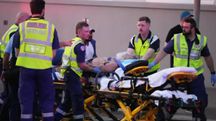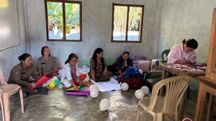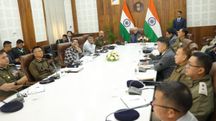Japan earthquake death toll rises to 48 as troops join rescue, relief efforts
A sequence of earthquakes struck the western region of Japan, resulting in a minimum of 48 fatalities and extensive damage to myriad buildings, vehicles, and boats. Authorities cautioned residents in certain areas on Tuesday to refrain from returning to their homes due to the possibility of additional powerful tremors

A sequence of earthquakes struck the western region of Japan, resulting in a minimum of 48 fatalities and extensive damage to myriad buildings, vehicles, and boats. Authorities cautioned residents in certain areas on Tuesday to refrain from returning to their homes due to the possibility of additional powerful tremors. Ishikawa prefecture and neighbouring regions continued to experience aftershocks a day after a 7.6 magnitude quake hit the area on Monday afternoon.
The death toll in Ishikawa was confirmed at 48, with the majority of casualties reported in the cities of Wajima and Suzu, as per Japan's state broadcaster NHK and other media sources. Officials reported at least fourteen individuals to be severely injured, while the extent of damage to homes was so vast that it couldn't be immediately evaluated.
Japanese media revealed that tens of thousands of homes had been obliterated. Government spokesperson Yoshimasa Hayashi reported 17 severe injuries and a slightly lesser death count, while acknowledging the tally provided by the prefecture. Essential services like water, electricity, and mobile services were still disrupted in some areas, and residents expressed their anguish over their demolished homes and uncertain future.
'It's not just a mess. The wall has collapsed, and you can see through to the next room. I don't think we can live here anymore,' expressed Miki Kobayashi, a resident of Ishikawa, while cleaning up her house. She revealed that their home was also affected in the 2007 quake. Japan's military has deployed 1,000 soldiers to the affected regions to assist with rescue operations, announced Prime Minister Fumio Kishida on Tuesday. 'Saving lives is our priority and we are fighting a battle against time,' he stated. 'It is critical that people trapped in homes get rescued immediately.'
A 5.6 magnitude earthquake was reported in the Ishikawa area. In Wajima city, a fire that had caused the sky to glow with embers and smoke was brought under control by firefighters. According to Kyodo news agency, Ishikawa prefectural officials reported multiple fires in Wajima, engulfing over 200 structures. There were also reports of more than a dozen people trapped under rubble.
The quake also resulted in injuries and structural damage in Niigata, Toyama, Fukui and Gifu prefectures. Prime Minister Fumio Kishida addressed the situation, stating that northern areas of the Noto Peninsula were difficult to access for vehicles. He assured that the central government was coordinating the shipment of relief supplies via ships.
Nuclear regulators confirmed that the nuclear plants in the region were operating normally, despite a major quake and tsunami in March 2011 causing three reactors to melt and release large amounts of radiation at a nuclear plant in northeastern Japan. News footage showed collapsed houses, flattened wooden structures, overturned cars, and half-sunken ships in bays following tsunami waves, leaving the coastline muddied.
Also read : Assam government mulls to shut down 1000 private Madrasas, conduct population census: Himanta Biswa Sarma
Copyright©2025 Living Media India Limited. For reprint rights: Syndications Today









